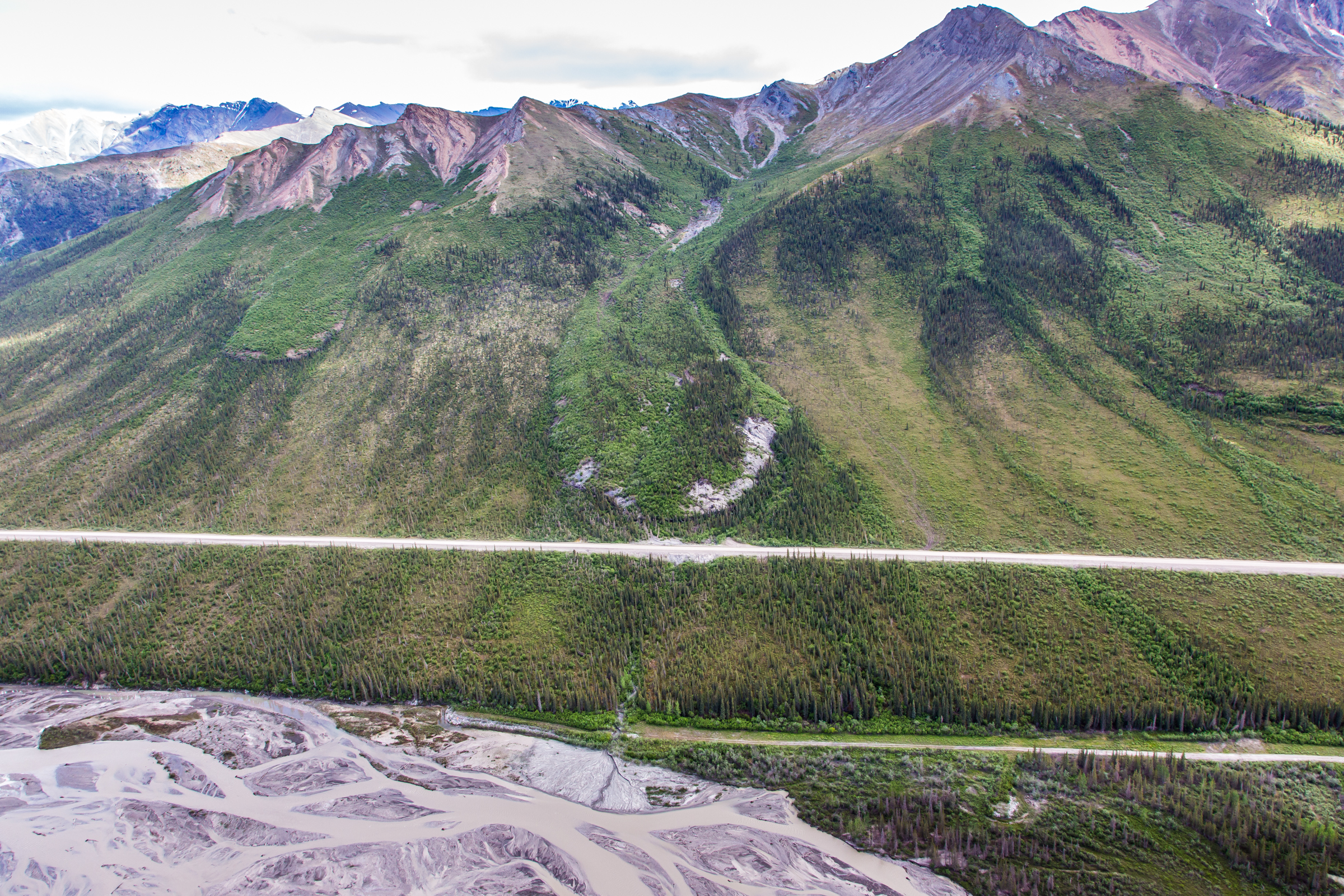How a ‘frozen debris lobe’ threatens Alaska’s only highway to the Arctic

A slow-moving blob of frozen debris is threatening Alaska’s only highway to the Arctic, but state officials say they have time to move the road out of danger and are poised to do so.
The threat comes from a “frozen debris lobe” that is creeping down a mountain slope in the Brooks Range and is expected to overtake the Dalton Highway, the 415-mile road to the Prudhoe Bay oil-field complex.
Something of a cross between a glacier and a landslide, the lobe is a conglomeration of silt, frozen and liquid water, tree and plant matter and rock. There are 23 such debris lobes within a mile the Dalton Highway and and upslope from it, according to researchers at the University of Alaska Fairbanks.
But the one of greatest concern is at Milepost 219 of the Dalton Highway, just north of the highway’s midpoint and about 25 miles south of Atigun Pass, the road’s highest elevation point. Identified as FDL-A, it was just 26.26 meters (86.48 feet) away from the highway on Nov. 23, and has been moving at a rate of 1.5 centimeters a day, according to daily monitoring done by University of Alaska Fairbanks scientists.
At its current rate, the lobe is expected to reach the highway in less than five years — by spring of 2022 — said Jeff Currey, a northern region engineer for the Alaska Department of Transportation and Public Facilities.
Even though it has not yet reached the highway, the lobe has already created problems, Currey said in an email. It is composed mostly of silt, and some of that regularly tumbles downslope and into highway ditches and culverts, he said. Maintenance workers have cleared out those areas, “but in my opinion, it’s pretty inevitable they will clog up again even if they have been cleaned,” he said.
There is a longer term solution. By next fall, the at-risk section of highway will be moved 400 feet to the west, Currey said. The state transportation department has awarded a contract of about $21 million for work that will not only move that piece of the highway but totally reconstruct about 25 miles, he said. The area’s permafrost makes the project complex, and some details are still being worked out, he said.
“The ground here is very ice-rich, but bedrock is `only’ about 10’ deep, so the original plan was to dig the ice-rich permafrost out under the road surface and replace it with thaw-stable material,” he said. “Unfortunately, disposing of the excavated material became an issue late in the project development process.”
More than 90 percent of the project’s funding is from the federal government, with the state providing the remainder, Currey said.
The relocation of that section is part of a larger, multi-year program to upgrade about large portions of the Dalton Highway. The economically critical highway, mostly used by trucks servicing the North Slope oil fields, has been undermined in recent years by thawing permafrost and flooding, both linked to climate change.
This year, the department conducted one phase of the program — installation of fish-passage pipes and culverts, roadway widening and some repairs and resurfacing at the section between miles 362 and 379, near the northern terminus, which ends at Prudhoe Bay and Deadhorse.
The frozen debris lobes present special challenges. They are being studied by experts at UAF and the federal and state transportation departments, and research has attracted funding from the National Science Foundation.
Frozen debris lobes typically form on concave sections of mountains that were left by small cirque glaciers, according to UAF researchers. The first comprehensive study of eight Dalton Highway-area frozen debris lobes revealed that six of them have sped up since 1955, according the researchers.